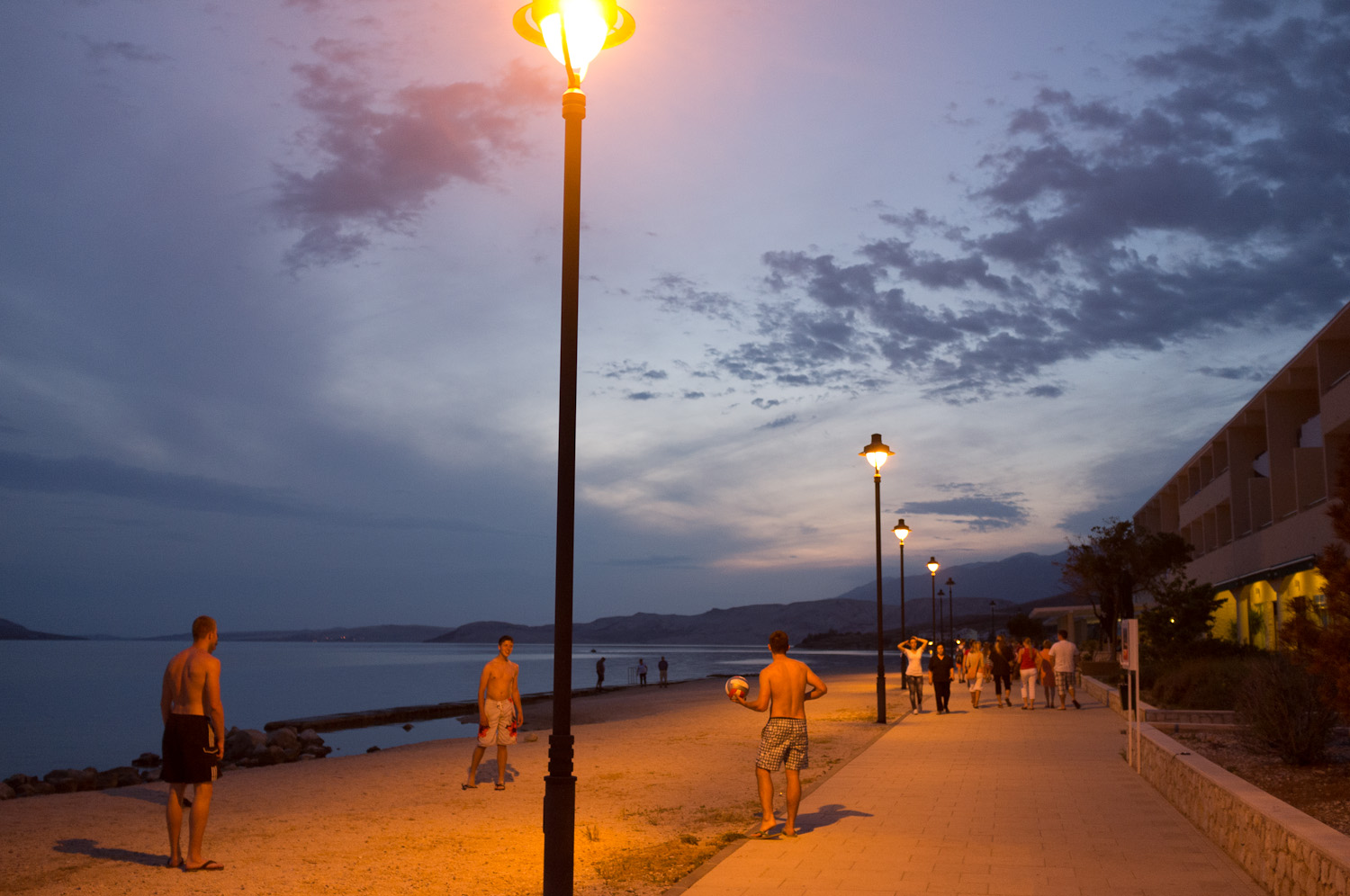 FinePix X100 (23mm, f/2, 1/60 sec, ISO800)
FinePix X100 (23mm, f/2, 1/60 sec, ISO800)
As photo enthusiasts we are living in wonderful times. Just think about what camera you were using 10 years ago. Maybe you were already shooting digital. Maybe you were an early adopter and already using a DSLR. I did. A Nikon D1. A pro camera with a 2,7MP APS-C sensor with an max ISO-setting ISO 1600 but I really did not like to go there. I preferred to stay at ISO 200. The screen on the back was small. There was no loupe or histogram so it was rather there to check whether an image was recorded or not.
Why I’m telling you that? Back then it was state of the art. Ok, the D1X was with it’s impressive 5MP sensor but those were the best digital cameras at that time. Pro’s used them to shoot images for magazines. The still fast 5 frames per second aside every entry level DSLR today is superior to that. Ok that was 10 years ago. But let’s have a look just about 5 years back. Before the Canon 5D hits the market the best you can get was APS-C sensor DSLRs in the 6-10MP area if you don’t take the extremely expensive Canon 1Ds into account.
Image Quality Today:
The sensor of my Sony NEX 5 which came out 2 years ago is better than the sensor of the Nikon D300s. Still the top APS-C camera from Nikon. The Sony NEX 5N sensor is better than the one in the NEX 5. The Fuji X100 sensor is better and even better than the sensor of my full frame Canon 5D. And the X1-Pro has a better sensor than the X100.
This was a very long introduction but the message is short: Don’t worry about the image quality of any APS-C mirror less camera today! They are vastly superior to any camera you could buy just 5 years ago. They reason I’m writing this is because if you read the posts on dpreview or elsewhere you got the impression that good image quality is very hard to find but this is complete nonsense. I suspect some of these posters never touched one of these cameras or maybe any camera at all. Or there are the ones that just shoot brick walls or their cat at 12.800 ASA in a dim lit room. And some simply hope that a new camera will help them to take better pictures and if the new camera doesn’t deliver they express their disappointment. They would be better off joining a photography class.
Usually those voices are much louder than the voices of people who are pleased with their cameras. They are out to take pictures instead of worrying about corner sharpness or lens distortion. I’m in this group. When I got my NEX 5 I was impressed by the image quality. I also used the 16mm kit lens on my first trip in the USA and liked the results. Maybe I’m not critical enough? I don’t think so. I try to use my equipment in the best possible way. If the 16mm lens is soft at f2.8 I try to avoid shooting it wide open. Most of the time I shoot it at f8 where it performs definitely good enough for me. Some of my favorite shots come from this lens. And the image quality is as good as what I got from my DLSR. I include 3 images here taken with the 16mm. I have chosen images that have some structures in the corners so you can check them. Of course there is some blur in the outer lower corners but it’s not enough to worry me. Most of the time what happens in the outer corners is of no interest anyway.
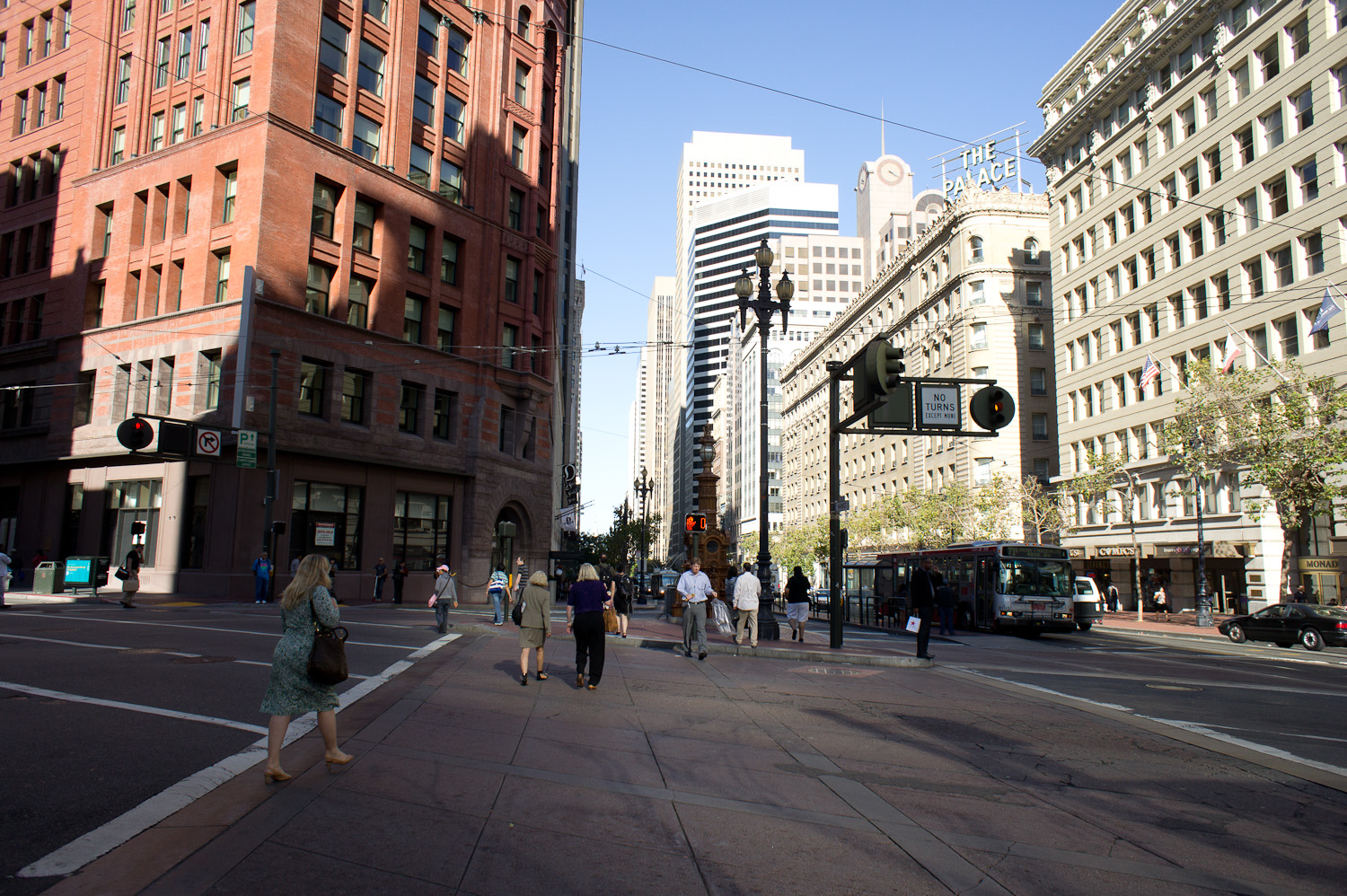 NEX-5 (16mm, f/8, 1/250 sec, ISO200)
NEX-5 (16mm, f/8, 1/250 sec, ISO200) NEX-5 (16mm, f/8, 1/250 sec, ISO200)
NEX-5 (16mm, f/8, 1/250 sec, ISO200)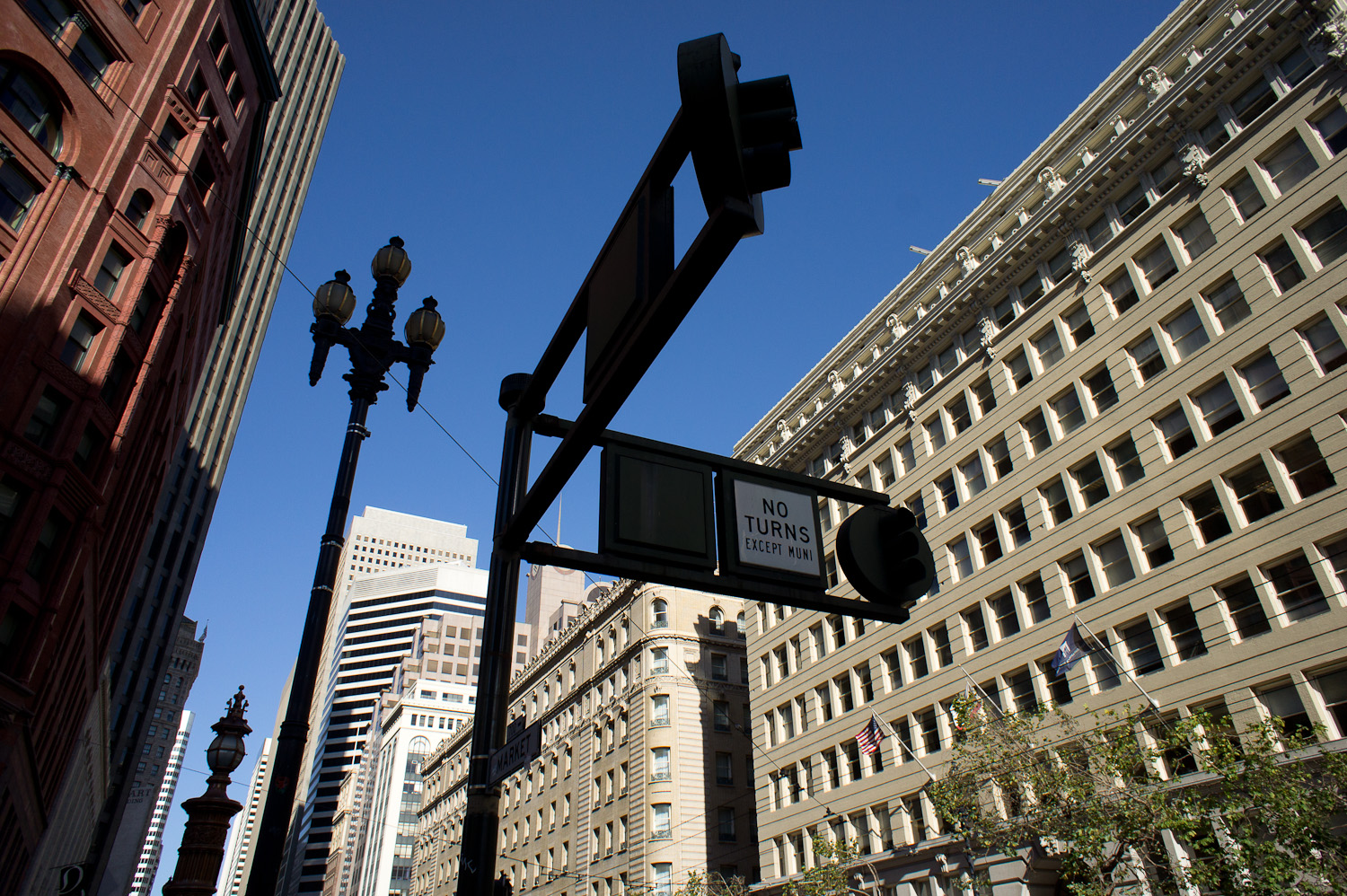 NEX-5 (16mm, f/8, 1/500 sec, ISO200)
NEX-5 (16mm, f/8, 1/500 sec, ISO200)
That’s a big difference to the images you got from a compact camera. Just have a look at the images in part I. The difference in image quality is clearly visible even for web use.
I love how these large sensors deal with contrast like in this example ( NEX 5 ).
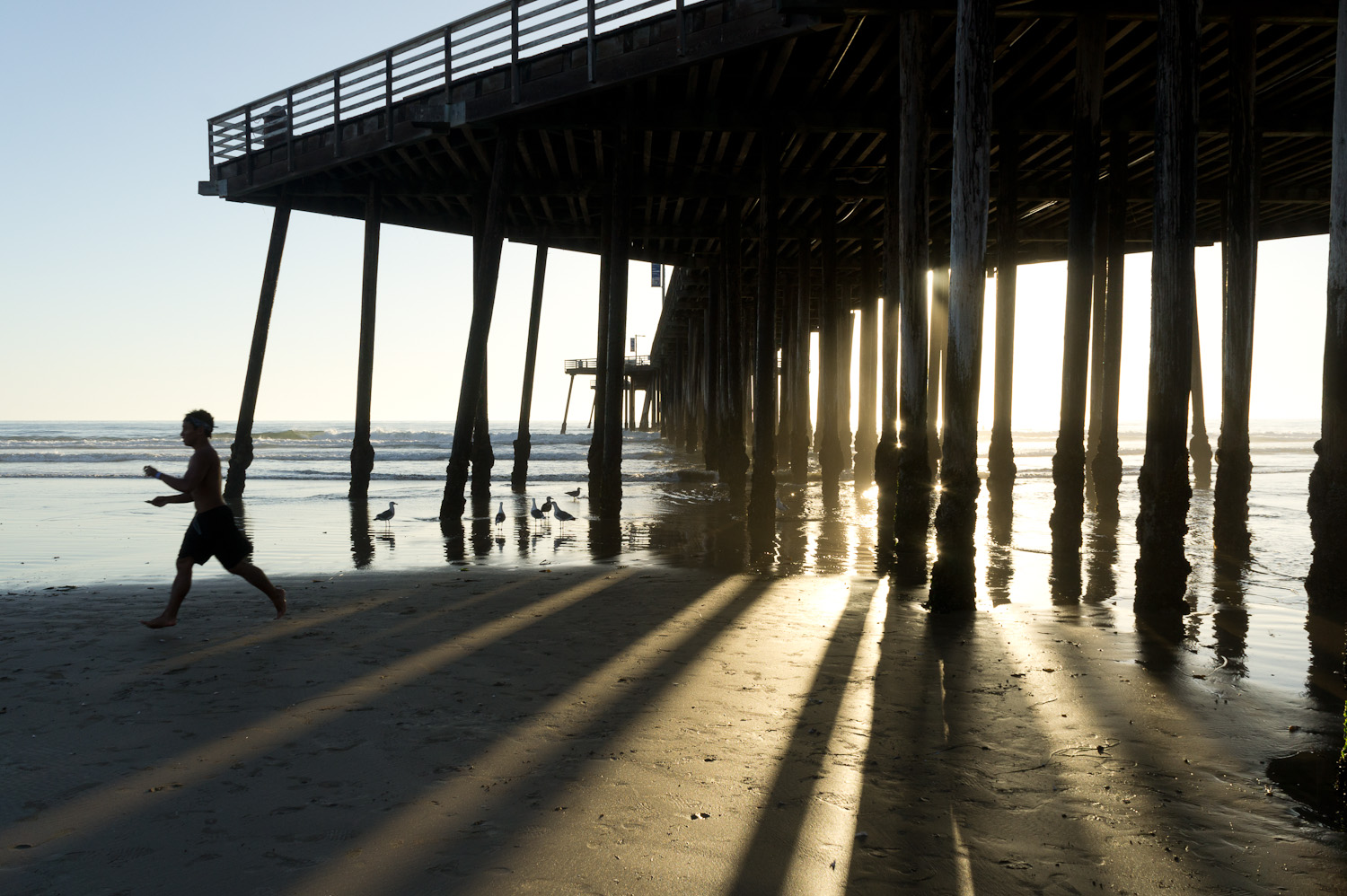 NEX-5 (19mm, f/11, 1/200 sec, ISO200)
NEX-5 (19mm, f/11, 1/200 sec, ISO200)
And finally a real low light sample I have already posted some days ago. This is a ISO 2500 shot of the Fuji X100 with the lens at f2.0. So this is close to the worst image quality you get from the Fuji:
 FinePix X100 (23mm, f/2, 1/60 sec, ISO2500)
FinePix X100 (23mm, f/2, 1/60 sec, ISO2500)
Handling, Performance And Value For Money
Image quality being equal or better where are the draw backs of mirror less cameras? First what comes in mind is handling and performance ( in regard of speed of operation ). What I did not like on my NEX 5 was the lack of a viewfinder. I’m just used to shoot with viewfinders and this is the biggest issue I had with the NEX 5 but since IQ was such a big step above every other compact camera I have used before I can live with it. I discovered that the tilt screen is fun and that it helped me to shoot from a lower angle. I’m rather tall and I got the feeling that a lower viewpoint is better in a lot of shots. Most of the time I shoot with the camera on the hip ( medium format style ).
The newer NEX7 and NEX 6 now have viewfinders so I can use both ( viewfinder and tilt screen ) to compose a shot. On a NEX there are less knobs and no aperture ring on the lenses. Combine that with a rather “funky” menu system and you can see why some reviewers complained about the ergonomics. I can understand this point to a certain extend but if you are using AUTO-ISO there is no need to enter the menu a lot.
The Fuji X100 has one of the best viewfinders I have ever seen. I remember when I first used the camera. It was a delight. Regarding the menu system: It’s even funkier than the Sonys but shooting in AUTO ISO there is no need to use the menu at all. Aperture ring on the lens, shutter dial and exposure compensation dial on top makes the Fuji a dream to use. An almost non existent shutter sound because of the leaf shutter in the lens and the excellent high ISO quality makes it a perfect travel camera. If you can live with a 35mm ( 23mm APS-C ) lens it may be all you ever need. A 35mm lens is very versatile and can be used for landscapes, cities and portraits. This is the ultimate no nonsense equipment for a trip where you really want to travel light.
 FinePix X100 (23mm, f/2.8, 1/60 sec, ISO250)
FinePix X100 (23mm, f/2.8, 1/60 sec, ISO250)
Autofocus: Both are no AF champions by todays standards but I doubt that you need ultrafast AF when traveling. Most of the time a fast AF does not matter at all. The pyramids are not running away and there is no need to chase the Eiffel tower. Even the leaning tower of Pisa will stand long enough for your camera to lock focus and Venice will not sink before you got the shot. Don’t get me wrong: AF is still an issue sometimes and I would not recommend to use these cameras today if you want to take pictures of your kids or pets running around. Every entry level DSLR is better for that.
Value for money is a critical point. If you choose a DSLR you get more camera for less money. You get an optical viewfinder, fast AF, tilt swivel screens, sometimes even better ergonomics and most of all you get lot’s of ( mostly cheaper ) lenses to choose from. If you have young kids or if you have an interest in wildlife or close up photography I recommend to choose a DSLR. They are much more versatile. If money permits you still can get a Sony RX100 as your take everywhere camera. But today this compact camera with a relatively big 1″ sensor costs the same as a Canon 600D + kit lens.
Lenses: ( Sony )
This is still the weakest point of mirror less cameras today. When I got my NEX 5 two years ago I bought the kit with the two lenses: 16mm and the 18-55OS or as I prefer to see it 24mm and 27-82. Not the most flexible setup for travel photography. Obviously a longer zoom is missing, it would be a good thing if the standard zoom starts at 24mm and a real wide angle zoom would be great too. Guess what: All this comes true within the next couple of weeks. Here is what I would choose compared to my Canon setup which proofed to be perfect for traveling.
- 15-27mm OS ( Canon 17-40mm )
- 24-75mm OS ( Canon 24-105mm IS )
- 80-300mm OS or the 27-300mm OS ( Canon 70-200mm IS )
That’s more wide angle and more tele compared to what I got on my Canon 5D today. And the wide angle zoom has images stabilization too! These new lenses show that Sony is committed to the NEX system and now it becomes an alternative for those who want to travel light but still want to have a decent set of lenses. Add the rather expensive 1.8/23mm ( 35mm ) Zeiss and you have indoor low light and shallow DOF shooting covered too. But you can also get a superb 2/23mm ( 35mm ) Fuji lens with a Fuji X100 camera attached to it for free. I went that route.
Lenses ( Fuji ): I now start to use focal length in “full frame terms” only.
At the moment I’m not 100% sure whether I will go Fuji X-E1 or Sony NEX 6. I’m leaning towards the Sony but might also end up getting a Fuji X Pro-1.
When the X Pro-1 was announced I was impressed by the camera but less so with the first lenses. I’m not talking about the quality I’m talking about the focal lengths. 27mm is a neither nor lens. Neither wide enough nor versatile enough. I owned 50mm lenses but never used them a lot. It’s too narrow compared to 35mm and it is too short for head and shoulder portraits. And finally the 60mm Macro ( 90mm ) which is too slow for true portrait lens. But Fuji is also addressing this. The upcoming lenses look much better:1.4/35mm yeah that’s it! The 41mm pancake looks great too and the 1.4/84mm will make for a great portrait lens. I’m wondering if the X Pro-1 would have been an even bigger success if it had been launched with those lenses. And finally 3 zooms to cover traveling. So here is the list of lenses that I would choose if going Fuji.
- 15-36mm OIS
- 27-84mm OIS
- 83-300mm OIS
- 1.4/35mm
- 1.4/84mm
- 2.8/42 pancake ( maybe )
The zoom options are very similar to Sony except for the standard zoom which will be a lot bigger and starts only at 27mm. It’s a little brighter but I would sacrifice that in order to get 24mm. The 35mm is brighter than the Zeiss and the lens on the X100 which is a very good thing and there is no alternative to the 1.4/84mm from Sony today.
But now comes the bad news. Almost none of those lenses above are available today. Thanks to the roadmaps we know what’s coming but I have learned from Sony that it might take a little longer than expected.
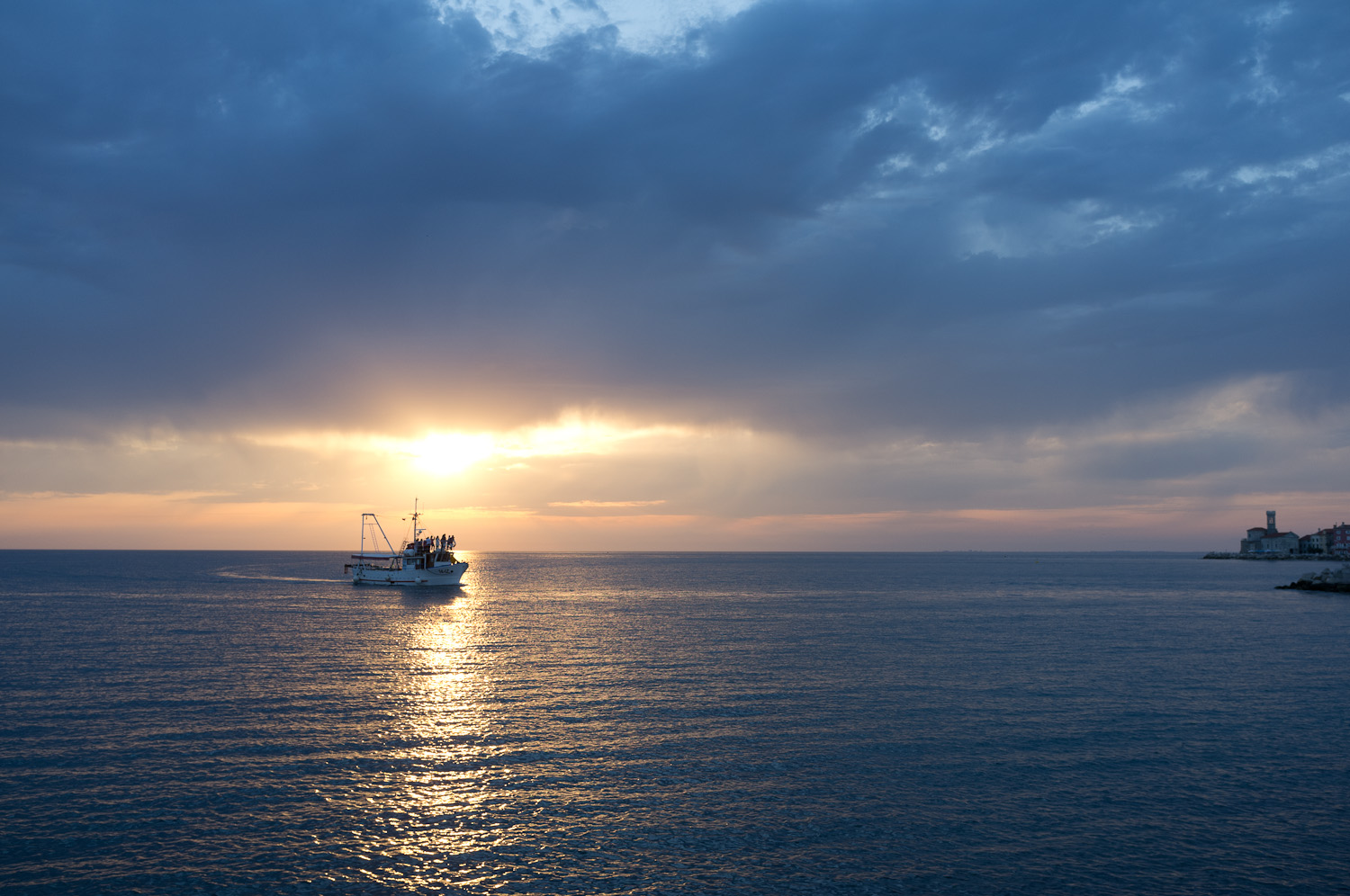 FinePix X100 (23mm, f/5.6, 1/120 sec, ISO200)
FinePix X100 (23mm, f/5.6, 1/120 sec, ISO200)
Now the article went in a completely different direction. My plan was to tell you about my two weeks vacation in Croatia where I relied only on my NEX 5 and X100. Maybe it’s because I’m not a person that looks back but prefers to look forward. Looking forward: There are wonderful times ahead of us. Cameras definitely are no longer an excuse for poor photos. Looking back I have to say that I did not miss much even with just using the 35mm lens on the Fuji most of the time. Sometimes in very narrow spaces like the Diocletian’s Palace in Split I wished for a wider lens and sometimes I wanted to cover the sunset with a longer lens ( see image above ) but in general it was a pleasant surprise to travel like a tourist and not like a pro. And that’s a very good thing because I’m a tourist not a pro. An even better thing is that I still can get pro quality results.
 FinePix X100 (23mm, f/5.6, 1/400 sec, ISO200)
FinePix X100 (23mm, f/5.6, 1/400 sec, ISO200)
Since I changed to the Canon 5D I waited for Canon to make a real upgrade to the body. I wanted fast AF and a fast frame rate. The Canon 5D mk III finally is the camera I wished Canon to make but I haven’t got it. Why? Because I’m not sure if I will use DSLRs for traveling in the future. I think there is no way for me going back. If Fuji or Sony or whoever makes a reasonable sized full frame camera like the Leica M I will buy it in a heartbeat. Until that happens I will either get the Fuji X-E1 or the Fuji X Pro-1 or the Sony NEX 6. The NEX 7 is also still very tempting because I love it’s tri navi operation but I prefer to have less pixels on an APS-C sized sensor.
Sorry for not being able to recommend one of them over the other. Today I’m not sure which one I will choose either. The great thing is that thanks to companies like Fuji and Sony today we have plenty of choice.
I also wrote a comparison in my Sony NEX vs Fuji X article that explains the different characters of these two camera lines in more detail.
I’m struggling to come to an end and I think I will add some “famous last words” on this topic soon.
